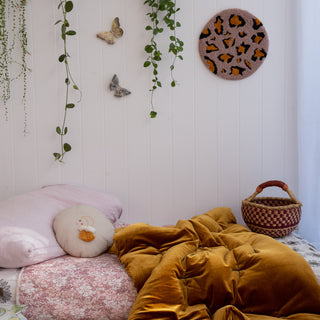Managing bed wetting in multiple children can be a challenge, especially when they are in different age groups with varying needs. However, with a thoughtful approach, you can create a supportive environment that fosters confidence and progress for each child. Here are some strategies to help you navigate this journey effectively.
Understanding bed wetting
Bed wetting, also known as nocturnal enuresis, is common among young children and can persist into the pre-teen years. It can be caused by several factors, including deep sleep patterns, slower bladder development, genetic predisposition, and even stress or anxiety. Understanding that it is a normal part of development for many children can help alleviate frustration for both parents and kids.
While some children may naturally outgrow bed wetting at an early age, others need a bit more time and support. The key is to be patient and avoid making the child feel ashamed or embarrassed. Managing bed wetting in multiple children requires a balance of practical strategies and emotional support tailored to each child's specific needs.
1. Recognise that every child is different
If you have multiple children who wet the bed, it’s essential to understand that each child’s experience will be different. One child may outgrow bed wetting quickly, while another may struggle with it for a longer period. Factors like age, bladder maturity, and emotional state can all play a role in how soon a child stops wetting the bed.
Instead of comparing your children to one another, focus on their individual progress. Encourage them to work on their own personal goals, and reassure them that they are not alone in their experiences.
2. Establish individualised routines
One of the most effective ways to manage bed wetting is by creating specific routines for each child. Some steps to consider include:
- Limiting fluids before bedtime: Encourage children to drink more fluids earlier in the day and reduce consumption in the evening.
- Scheduled bathroom breaks: Encourage your child to use the toilet before going to bed and, if necessary, wake them once during the night for a scheduled bathroom visit.
- Tracking progress: A reward system, such as a sticker chart or small incentives, can help motivate children and make the process feel more positive. Though sometimes this can create more pressure and stress for the child, so assess your own children to decide whether this approach is right for them.
- Avoiding punishment: Negative reinforcement can lead to stress, which may make the problem worse. Instead, celebrate small improvements and reassure your child that accidents are okay.
3. Use bed wetting alarms
Bed wetting alarms can be highly effective, particularly for older children who struggle with night-time accidents. These alarms detect moisture and wake the child when wetness is detected, helping to train their body to recognize the need to wake up and use the bathroom.
If more than one child needs an alarm, ensure each child has their own device suited to their needs. It may take a few weeks for the alarm to be fully effective, so be patient and consistent with its use.
4. Provide emotional support
Bed wetting can be emotionally challenging for children, especially if they have siblings who do not struggle with it. It is essential to create a safe and supportive environment where they feel comfortable discussing their feelings. Reassure them that bed wetting is a common part of growing up and that it will eventually resolve.
Avoid teasing, punishments, or comparisons between siblings. Instead, encourage open conversations where children can express any concerns or frustrations. Let them know they are not alone and that you are there to support them.
5. Use protective bedding solutions
When managing bed wetting in multiple children, preparation is key. Investing in waterproof mattress protectors, absorbent bed mats, and easy-to-wash bed linen can make night-time clean-up much easier. Have spare bedding and pyjamas readily available so that accidents can be managed quickly and efficiently.
By making clean-up simple and stress-free, you can minimise any frustration associated with bed wetting and help your child feel more at ease.
6. Encourage open communication
Children who wet the bed may feel isolated or embarrassed, so it is important to create an open and understanding atmosphere. Encourage them to talk about their experiences, and remind them that they are not at fault. Be honest about the fact that many children go through this phase and that, in time, they will overcome it.
Having age-appropriate conversations with each child can help them understand that bed wetting is a temporary issue that does not define them.
7. When to seek medical advice
While bed wetting is typically a normal part of childhood development, there are instances where medical guidance may be necessary. If your child suddenly starts wetting the bed after staying dry for a long period, experiences pain during urination, has excessive thirst, or snores loudly at night, it may be worth consulting a paediatrician.
A doctor can help determine if there is an underlying medical condition, such as a urinary tract infection, constipation or sleep disorder, that may be contributing to bed wetting. In some cases, they may recommend additional support to assist with managing bed wetting.
Managing bed wetting in multiple children requires patience, understanding, and a proactive approach. By setting up individualised routines, providing emotional reassurance, and using helpful tools like bed wetting alarms and protective waterproof bedding, you can create a stress-free and supportive environment for all your children.
Remember, bed wetting is just a stage of a child's life. With the right strategies, encouragement, and time, your children will outgrow it, allowing everyone to enjoy more restful and worry-free nights.












